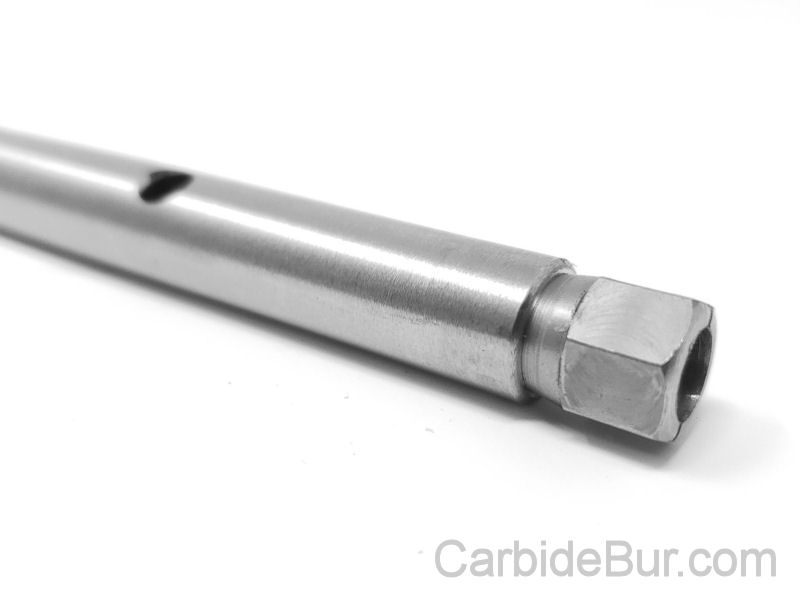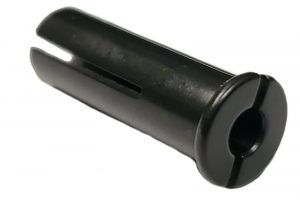Visa Credit Card Payments Accepted
Visa credit card payments, along with Mastercard, Discover, American Express and PayPal all accepted for our carbide bur die grinder tool bits. Here is some information about Visa credit card you might find interesting below.
Visa Inc. (also known as Visa, stylized as VISA) is an American multinational financial services corporation headquartered in Foster City, California, United States. It facilitates electronic funds transfers throughout the world, most commonly through Visa-branded credit cards, debit cards and prepaid cards. Visa does not issue cards, extend credit or set rates and fees for consumers; rather, Visa provides financial institutions with Visa-branded payment products that they then use to offer credit, debit, prepaid and cash-access programs to their customers. In 2015, the Nilson Report, a publication that tracks the credit card industry, found that Visa’s global network (known as VisaNet) processed 100 billion transactions during 2014 with a total volume of US$6.8 trillion.
It was established in 1958 by Bank of America (BofA) as the BankAmericard credit card program. In response to competitor Master Charge (now MasterCard), BofA began to license the BankAmericard program to other financial institutions in 1966. By 1970, BofA gave up direct control of the BankAmericard program, forming a consortium with the other various BankAmericard issuer banks to take over its management. It was then renamed Visa in 1976.
Visa has operations across all six continents. Nearly all Visa transactions worldwide are processed through the company’s directly operated VisaNet at one of four secure data centers, located in Ashburn, Virginia; Highlands Ranch, Colorado; London, England; and Singapore. These facilities are heavily secured against natural disasters, crime, and terrorism; can operate independently of each other and from external utilities if necessary; and can handle up to 30,000 simultaneous transactions and up to 100 billion computations every second.
Visa is the world’s second-largest card payment organization (debit and credit cards combined), after being surpassed by China UnionPay in 2015, based on annual value of card payments transacted and number of issued cards.
Visa Credit Card History
A 1976 ad promoting the change of name to “Visa”. Note the early Visa card shown in the ad, as well as the image of the BankAmericard that it replaced.
In mid-September 1958, Bank of America (BofA) launched its BankAmericard credit card program in Fresno, California, with an initial mass mailing (or “drop”, as they came to be called) of 60,000 unsolicited credit cards. The original idea was the brainchild of BofA’s in-house product development think tank, the Customer Services Research Group, and its leader, Joseph P. Williams. Williams convinced senior BofA executives in 1956 to let him pursue what became the world’s first successful mass mailing of unsolicited credit cards (actual working cards, not mere applications) to a large population.
Williams’ pioneering accomplishment was that he brought about the successful implementation of the all-purpose credit card (in the sense that his project was not cancelled outright), not in coming up with the idea. By the mid-1950s, the typical middle-class American already maintained revolving credit accounts with several different merchants, which was clearly inefficient and inconvenient due to the need to carry so many cards and pay so many separate bills each month. The need for a unified financial instrument was already evident to the American financial services industry, but no one could figure out how to do it. There were already charge cards like Diners Club (which had to be paid in full at the end of each billing cycle), and “by the mid-1950s, there had been at least a dozen attempts to create an all-purpose credit card.” However, these prior attempts had been carried out by small banks which lacked the resources to make them work. Williams and his team studied these failures carefully and believed they could avoid replicating those banks’ mistakes; they also studied existing revolving credit operations at Sears and Mobil Oil to learn why they were successful. Fresno was selected for its population of 250,000 (big enough to make a credit card work, small enough to control initial startup cost), BofA’s market share of that population (45%), and relative isolation, to control public relations damage in case the project failed.
Uses for Carbide Bur Cutting Tools:
Aluminum
Brass
Bronze
Carbon fiber
Cast iron
Ceramics
Copper
Fiberglass
Gold
Hard rubber
Plastic
Platinum
Silver
Steel
Stone
Titanium
Wood
Zinc
Burs (burrs) come in a variety of shapes and sizes, each of which can be used for different purposes:
Arch ball/pointed nose – engraving, texturing, increasing hole size
Ball – concave cuts, hollowing, shaping, carving. Useful for wood, stone, metal engraving.
Ball nose cone – rounding edges, surface finishing, tight spaces, and angles.
Carbide Ball nose cylinder- contour finishing
Ball nose tree (also known as tapered) – concave cuts and rounding edges
Cone – rounding edges, surface finishing, tight spaces, hard to reach areas.
Cylindrical – contour finishing and right-angled corners
Cylindrical end cut – contour finishing
Carbide Cylindrical no end cut – contour finishing
Flame – channel work and shaping
Inverted cone – v-cuts and rear-side chamfering
Oval – die grinding and engraving
Pointed tree – concave cuts, rounding edges, access to hard-to-reach areas, and acute angles.
Rounded tree – concave cuts and rounding edges
Need a longer reach?
Try our 4″ and 9″ extension tool for your carbide bur bits
Burs (burrs) also come in a variety of ranges, each of which has a specific benefit in their use:
Alloy-specific – heads have varying shapes used with certain metal alloys – used in the
aerospace/aviation industry
Base metal range – used for deburring on softer metals
Bolt remover range – used for the removal of broken studs
Foundry metal range – used for deburring on harder metals, stone, etc.
Inox range – specifically used with stainless steel
Locksmith range – used by locksmiths
Long shank range – general-purpose; long shafts useful for deeper, hard-to-reach areas
Miniature range – miniature heads useful for engraving and fine detail work
New geometry range – used for all general metal removal
Steel range – heads have specialized fluting to cut stainless steel
Universal range – general-purpose, best on metals such as copper, iron, nickel, and steel
Carbide burs (burrs) require a bit of special care to keep them performing optimally. To preserve the life
of your carbide burs (burrs), ensure your handpiece does not wobble. The speed of your rotary tool
should not exceed 35,000 RPMs, and speed should be gradually increased. Please note, however,
that higher speeds will prevent flute clogging inside the bur (burr). If you apply too much pressure to the
bur (burr), the edges may chip, resulting in premature dulling.
Choose Double or Single Cut Carbide Bur?
Used on ferrous and non ferrous metals, aluminium, soft steel and also for all non-metal materials such as stone, plastics, hard wood and ceramic. Double cut have more cutting edges and will remove material much faster. Double cut will leave a smoother finish than single cut due to producing smaller chips as they cut away the material. Use for medium-light stock removal, deburring, finishing and cleaning.
Designed for medium- light removal of material, deburring, fine finishing, cleaning, smooth finish, and creating small chips.
Usually used with stainless steel, hardened steel, copper, cast iron, and ferrous metals and will remove material quickly with a smooth finish. Use for heavy stock removal, milling, deburring and cleaning.
Designed for heavy removal of material, milling, deburring, cleaning, and creating long chips.
Try our 1/4” to 1/8” Collet Reducer
Allows you to use 1/8” shank carbide bits in your 1/4” die grinder
Uses for Carbide Bur Die Grinder Bits
Carbide burs are widely used in metalworking, tool making, engineering, model engineering, wood carving, jewelry making, welding, chamferring, casting, deburring, grinding, cylinder head porting and sculpting. Carbide burs can be used in the aerospace, automotive, dentistry, stone and metalsmith industries.
All our USA made carbide bur cutting tools ship SAME DAY ordered by USPS Mail with online tracking.
We can also dropship the carbide bur die grinder bits, if interested in joining our FREE dropship program.
We accept debit and all major credit card payments including Visa, MasterCard, Discover, American Express and PayPal. Fast and easy secure checkout with no account or login required. If you have any questions, visit our FAQ page or contact us here.

Follow us on Facebook, Twitter and Instagram
Return to CarbideBur.com
Carbide Burs – 1/4″ on 1/8″ Shanks – Accessories – Aluminum Cut – Bur Sets – End Mills – Long Shank – Solid Burs





